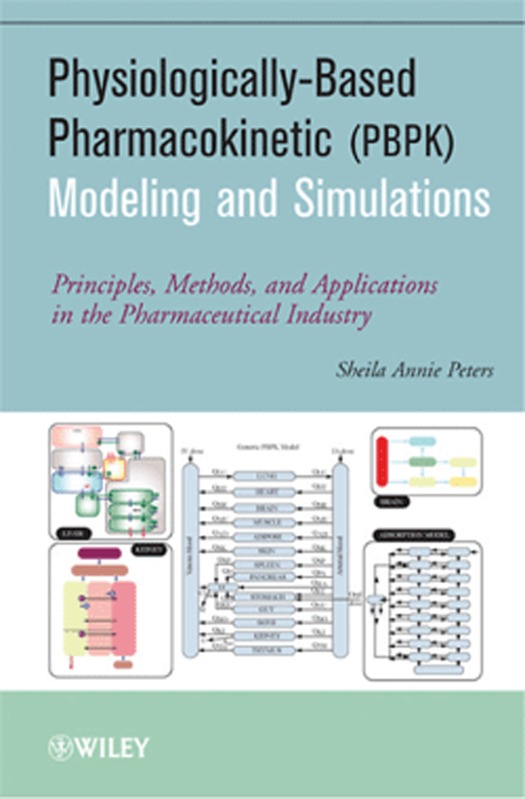 Edited by Sheila Annie Peters
Wiley, 2012
430 p
Edited by Sheila Annie Peters
Wiley, 2012
430 p
The publication last year of a textbook devoted to the theory and application of physiologically-based pharmacokinetic (PBPK) modeling and simulation in the pharmaceutical industry, by a scientist working in a pharmaceutical company, attests to the rapid emergence and recognition of the value of this mechanistic approach to drug selection and development. For the past 50 or so years, PBPK has been viewed primarily as an academic pursuit except within the area of risk assessment (to human) of environmental chemicals. This was driven by the need for a powerful predictive approach given the typical absence of human exposure data of many such compounds and the recognition by this community that empirical approaches alone are too limiting. That is not to say that physiological thinking has been absent in the interpretation and application of in vivo pharmacokinetic data by pharma; far from it. Moreover, mechanistic understanding of pharmacokinetic processes has grown by leaps and bounds during the past few decades as has quantitative in vitro–in vivo extrapolation of individual processes. What has been lacking is the wide adoption of dynamic mechanistic mathematical modeling of whole-body events, which requires the integration of a large body of systems-specific (physiological, anatomical, biochemical, and related) data with drug-specific data within the frame of complex but more realistic than empirical models. This book aims to address and help inform and hasten the use of PBPK models in preclinical and clinical drug development.
The book is divided into two major sections: principles and methods, and applications. Covered in the first section is an introduction chapter to physiological methods in general, followed by ones on models of absorption, distribution, and elimination, as well as generic PBPK models, variability, uncertainty, and sensitivity analysis as applied to model building and use, and drug–drug interactions. Although much of this section is devoted to small molecules, it finishes with a welcomed and informative chapter on biologics, highly relevant given the increasing number of such drugs under development. Section 2 covers applications within the pharmaceutical industry, the integration of PBPK with pharmacodynamics, as well as PBPK modeling of populations; it finishes with a short chapter on the use of PBPK in drug discovery and development. Each chapter starts with a useful general introduction followed by an in-depth analysis, dealing with mechanistic and mathematical aspects of the topic, together with methodologies used to acquire the relevant information. At the end of each chapter is a helpful list of terms used with definitions, as well as an extensive list of references to help those readers wishing to pursue specific aspects in greater detail. The material is well organized, bringing together a large amount of information, and in general, explanations and development of the many equations are clear and well written. The book is also replete with examples as well as many informative tables and schematic flow charts that help the reader to understand and appreciate the place and industrial application of PBPK, as a compound moves from drug candidate selection and optimization through to early human investigation and clinical development.
Given the complexity of PBPK models and the manifold-associated data, it is perhaps not surprising that the rise in industrial application can be traced to the growth and support of a variety of dedicated commercial PBPK software mentioned in the book. The author rightly stresses that nonetheless it is important that those applying the methodology should understand the concepts and methodologies underpinning PBPK, as well as its current limitations. A concern expressed by the author is that such software limits flexibility of a researcher in being able to modify some of the algorithms to explore the aspects not covered by the existing software. However, such persons are likely to be in the minority for if industrial application of PBPK models is to be routine and widespread, as the author wants, then the everyday needs will be met by ever-evolving commercial software.
There is little to fault the book. In places the assumptions behind the equations are not fully stated, the reasoning on clinical impact of altered plasma protein binding may be open to some debate, that although thankfully relatively few there are the inevitable typos of a first printing, and some color in the figures would have been appreciated. The title of the book also does not fully convey its contents in that much of the last third of the book is devoted to pharmacodynamics (PD) and (PB)PK/PD, which is welcomed, although in a number of examples quoted to illustrate application, it is not clear that a PBPK, as against a compartmental PK, model was used by the investigators. That said, this book should be on the shelf and a companion to anyone seriously interested in mechanistic model-based drug development.
Conflict of interest
The author declared no conflict of interest.


